NINTENDO
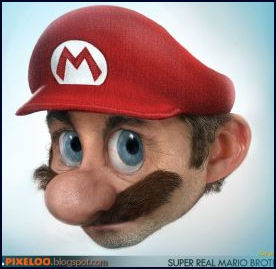
Kyoto-based Nintendo makes game consoles and game software. It is the world's largest video games company, the world’s largest producer of handheld game players and the world’s largest producer of game consoles. It was displaced by Sony in the late 1990s as the top video game company but won the title back in the mid 2000s.
Nintendo has put the emphasis on making, simple, fun games rather than developing sophisticated games with elaborate graphics. The company aims to develop games that novices can easily pick up. In the mid 2000s, Nintendo got 60 percent of its revenue from hand hold game consoles and controlled 94 percent of the hand held market worldwide, annihilating competitors such as Bandai and Sega.
Champion professional gamer Jonathan (Fatal1ty) Wendel wrote in Time, “I vividly recall playing on my Nintendo from the age of 4, and to say the least, it changed my life forever,,,,While I won my championships on ultra-performance PCs, I still go to Nintendo for fun and relaxation, playing with the same passion and sense of joy I remember when I was a kid on that original Nintendo console. This year I’ve become addicted to Wii. I even play Wii with my grandma...By making video gaming accessible and fun for people like my grandma [Nintendo] has opened the world I live in every day to people who never even wanted to visit before.”
In the book “ Nintendo Magic: Winning the Videogame Wars “ by Japanese journalist Osamu Inoue, Nintendo President is quoted as saying, “For a long time, we’ve made things that are fundamentally useless. People won’t endure inconvenience that they don’t have to endure. They won’t read your instruction manual, If something is hard to understand, it’s entirely the makers fault. If they can’t figure out a video game in five minutes...that’s the end of it.”
Compared to its rivals, the giants Microsoft and Sony, Nintendo is relatively small with 4,000 employees as of 2008. Nintendo placed 48th in the 2011 Interbrand Best Global Brands ranking. It placed 38th the previous year.
The Louvre uses Nintendo 3DS game consoles to offer touch-screen, visual and audio guidance to visitors. Wii is being touted as a means of helping people with disabilities in environments that are safe, fun and motivational. The idea has produced striking results with people with Parkinson’s disease. In a University of Georgia study people with Parkinson’s who played Wii sports such as boxing and bowling or an hour a day three times a week for four weeks showed significant improvements in rigidity movement, fine motor skills and energy levels. Their depression levels also decreased. [Source: Times of London}
Books: “ Nintendo Magic: Winning the Videogame Wars “ by Osamu Inoue (2010, Vertical Inc.); “Game Over: How Nintendo Conquered the World” by David Sheff
Good Websites and Sources: Japan Video Games japanvideogames.com ; Photo Blog of Video Games thefastertimes.com/videogames ; Nintendo nintendo.com ; Wikipedia article on Nintendo Wikipedia ; Wii at Nintendo nintendo.com/wii ; Official Nintendo Magazine officialnintendomagazine.co.uk ; Miyamoto Shrine, a site dedicated to Shigeru Miyamoto miyamotoshrine.com Time Magazine on Shigeru Miyamototime.com/time/specials ; Official Pokemon Site pokemon.com/us
Links in this Website: SPORTS AND RECREATION IN JAPAN (Click Sports, Recreation, Pets ) Factsanddetails.com/Japan ; BICYCLES, HORSES, BOATS AND GAMBLING IN JAPAN Factsanddetails.com/Japan ; PACHINKO Factsanddetails.com/Japan ; GAMES IN JAPAN Factsanddetails.com/Japan ; TOYS IN JAPAN Factsanddetails.com/Japan ; VIDEO GAMES IN JAPAN Factsanddetails.com/Japan ; SONY VIDEO GAMES Factsanddetails.com/Japan ; NINTENDO Factsanddetails.com/Japan
History of Nintendo
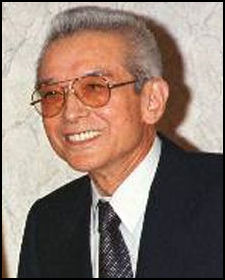
Nintendo founder
Hiroshi Yamauchi Nintendo is a family business started by the Yamauchi family around the turn of the 20th century. It began as a maker of playing cards. In the 1980s and 90s, Nintendo was transformed into a global video games maker by its legendary CEO, Hiroshi Yamauchi.
Nintendo had its first big successes with the games Super Mario Brothers and Donkey Kong. It resurrected the video game business in the 1980s, when the industry was hurting, by introducing the eight-bit system. It then developed game technology based on better understanding of kids and their parents than main rival Sega.
Nintendo took control of video console market in 1996, with the introduction of Nintendo 64, which came on the heels of the introduction Sega's unpopular complicated Saturn console. Until 1993, Sega had controlled 50 percent of the console market. By 1999, Sega's market share in the U.S. had shrunk to less than 1 percent.
Nintendo then had a string of of successes with Pokemon, its handheld games, held off challenges by Sony’s Playstation and achieved a new plateau of success with the the Wii consoles and games associated with it. For a while Nintendo owned the Seattle Mariners. In 2004 Nintendo owner Yamauchi sold his shares in the Mariners but remains its CEO. See Mariners, Baseball.
In 2008, former Nintendo chairman Hiroshi Yamauchi, was selected by Forbes as the richest man in Japan with a net worth of $7.8 billion, $3 billion more than the previous year thanks to the soaring value of Nintendo stock on the back of brisk Wii video game console sales. He was ranked the third wealthiest person in Japan by Forbes 2007 with a net worth of $4.8 billion. He moved up 11 spots that year, again benefitting from the surge in Nintendo share prices on the success of the Wii game console. In 2009, Yamauchi, slipped to third with $4.5 billion.
Nintendo Success
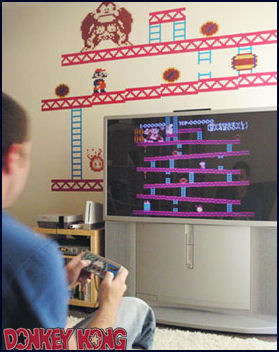
Donkey Kong room In early 2001, Nintendo had 36 percent share of the video console market and a 45 percent share of the video software market. In 1999 Nintendo's made profits of $1.2 billion. In 2000 it made profits of $700 million on $4.2 billion in sales.
Nintendo slumped in the early 2000s. It posted a loss of $26.7 million the first half of the fiscal year in 2003. It was the first time it posted a lost since it was listed for trading in 1962. It blamed the loss on the sagging sale of the Gamecube console and unfavorable currency exchange rates. Game users were complaining that all the Nintendo games seemed the same and the only new games were variations of Super Mario, Pokeman and Zelda. Profits in fiscal year 2004-05 were only ¥84 billion.
Nintendo earned profits of around $1 billion on $8 billion in sales in fiscal 2006-2007, a 90 percent jump from the previous year — thanks largely to brisk sales of DS portable and Wii console, the marketing of DS to the elderly and to women, and software sales and foreign exchange gains.
Nintendo sales hit ¥1.67 trillion in fiscal 2007-2008, 70 percent higher than the previous year, and profits reached ¥257.34 billion, 47.7 percent higher than the previous year, thanks to robust sales of Wii and DS devices. In fiscal 2007 Nintendo sold 305 million games and game consoles, double the previous year. Wii and DSwere the top two video game hardware devices sin the United States. Again Nintendo owed some its success to expanding beyond gamers and attracting new customers such as women and older people.
Games sales are doing well also. Fifteen DS games saw sales of than 1 million units in fiscal 2007-2008 including 9.56 million for “Pokemon Diamond/pearl” and 6.53 million for “Dr. Kawashima’s Brain Training: How Old Is Your Brain — “ and 16.29 million units for “Wii Sports”.
Between November 2006, when Wii was launched, and June 2008, Nintendo shares more than doubled while those of Sony shrunk 17 percent. During one five day stretch in July 2007, Nintendo stock rose about $50 a day, reaching $600, boosting the capitalization of Nintendo to ¥8.76 trillion, making it third among Japanese companies behind Toyota and Canon and ahead of Honda. Suppliers for Nintendo also made out well. The stock prices of Ubiquitous, a software supplier for Nintendo, quadrupled when it introduced on the market for start ups.
Nintendo’s success has been attributed not to high tech development but rather “lateral thinking with seasoned technology.”The Wii controller is essentially television remote reconfigured with motion sensing devices. Touch screens had been around for some time; it was Nintendo that figured out how to use the technology for a fun hand-held game.
Nintendo in 2008 and 2009
Nintendo racked up $2.79 billion in profits in fiscal 2008-2009, a 8.5 percent increase from the previous year, with sales reaching $18 billion, with overseas sales accounting for 87.5 percent. Even so Nintendo stock dropped 50 percent in 2008 after double each of the previous two years.
On the company’s future Nintendo President Sataru Iwata said in 2008, “We aim to take a better position in the Japanese market and also cultivate new markets in other regions and countries.” With demand remaining strong Nintendo increased production of Wii game platforms from 1.8 million to 2.4 million a month in the summer of 2008
Nintendo was not expected to be affected by the economic crisis in 2008 as games that can be played for weeks or months were seen as a better entertainment value that vacations, movies and restaurants.
In December 2008, Nintendo President Satoru Iwata said the demand for Wii and DS game consoles remained strong and said that Nintendo should be able to weather the global economic crisis at least through of end of 2009. “It seems more and more people are enjoying games instead of traveling or eating out to save money,” he said,
Nintendo’s Troubles
Nintendo’s profits were down by 66 percent in fiscal 2010-2011 in part because of the strong yen and price cuts in the DS handheld gaming device. It made a profit of ¥77.6 billion (compared to ¥228.6 billion in 2009-2010) on sales of ¥1.014 trillion.
In June 2011, Reuters reported: “Nintendo retains the lead in gaming hardware, but is struggling to win users from Microsoft and Sony after the disappointing introduction of its 3DS handheld device. Gaming executives now hope a new Wii can jumpstart a $65 billion video games industry -- surpassing Hollywood in size -- still struggling to rebound from the recession.” [Source: Liana B. Baker and Isabel Reynolds, Reuters, June 7, 2011]
Nintendo’s dominance is declining as competitors slash prices and come up with devises that mimic features popularized by Nintendo. As the popularity of iPhones and smart phones rises and they offer more games, social networking and applications and make it less imperative to but a special gaming device.
In 2008 Nintendo lost a patent infringement court case in Texas and was ordered to pay the U.S. Video game company Anascaoe Ltd. $21 million in damages, In April 2010 a court overturned the decision and ruled in Nintendo’s favor, the original suit was filed in 2006 against Anascaoe and Microsoft.
Nintendo in 2011
In September 2011, AP reported: “Nintendo is readying an array of video games for the holidays in an aggressive attempt at catch-up for lost time from the sales delay of the 3DS portable machine last year. The year-end holidays and the New Year's gift-giving season will be a key test for the 3DS portable. Game companies make up more than half their annual sales during those months. [Source: AP, September 12, 2011]
Analysts say it cost the Japanese video game maker potential momentum when the 3DS was not ready for Christmas last year. It did not go on sale until February in Japan, and March in the U.S. and Europe, forcing Nintendo to slash its profit forecasts by more than half.
Adding to the woes, the overall gaming business has hit the doldrums recently, as the initial momentum wore off from the Wii and DS handheld, both megahits from Kyoto-based Nintendo — partly because of a scarcity of hit game software, but also because of the advent of other mobile entertainment, such as cellphone gaming and social networking like Twitter.
Nintendo Hacker Attack
In June 2011, AP reported, Nintendo was targeted in a recent online data attack, but no personal or company information was lost. The server of an affiliate of Nintendo Co.'s US unit was accessed unlawfully a few weeks ago, but there was no damage, company spokesman Ken Toyoda said."There were no third-party victims," Toyoda said. "But it is a fact there was some kind of possible hacking attack." [Source: AP, June 5, 2011]
The damage from what could be a recent spate of such data breaches targeting big-name brands was more serious at rival Sony Corp. It is still unclear who is behind the attacks at Sony or Nintendo. Hackers calling themselves Lulz Security have recently boasted of compromising more than one million users' personal information.
Mario Games
Mario — the pot-bellied Italian plumber who rescues princesses, collects gold coins and gobbles down magic mushrooms — first appeared as the character Jumpman in “Donkey Kong” in 1981. In 1983 Mario and Luigi debuted in their own game “Mario Brothers”. In 1985 “Super Mario Brothers” encouraged many to buy Nintendo’s first console, which sold 60 million units. After it was launched in 1990 “Super Mario Bros. 3" sold 17.3 million copies. “Super Mario Kart”, released in 1992, was another big hit. In 2006 and 2009 respectively versions of this game were introduced for Nintendo DS and Wii.
The "Mario Bros." series has achieved cumulative global sales of 275 million units. There are over 100 games with Mario as the primary character. Mario has also appeared in movies and television shows and has shown up in a range of merchandise. As of late 2009, Nintendo had sold 22 million games in the Super Mario franchise. Many of Mario’s most recognizable features were devised as software shortcuts. His hat was invented to avoid difficult-to-depict hair and the mustache was devised to cover facial expressions, which even today are difficult to properly convey in a video game.
Nintendo Losses in 2011 and 2012
Nintendo lost 43.2 billion yen ($533 million) in the fiscal year April 2011 to March 2012 as weak sales of the Wii home console and the strong yen eroded earnings. Associated Press reported: “Nintendo, once the star of video games, has seen its glory fade with the advent of smartphones that are wooing away casual gamers. Nintendo, whose products compete against offerings from Microsoft Corp. and Sony Corp., acknowledged sales suffered because of the price cut on the 3DS during the fiscal year. Such price cuts are relatively common to boost slow sales and try to make up in profit later from game software sales. But that strategy has chipped away at Nintendo's earnings. [Source: Yuri Kageyama, Associated Press, April 26, 2012]
Nintendo's annual sales plunged 36 percent to 647.7 billion yen ($8 billion). That was worse than the company's earlier forecast at 660 billion yen ($8.1 billion) and the 670 billion yen ($8.3 billion) analysts surveyed by FactSet had forecast. Nintendo sold 9.8 million Wii machines over the fiscal year just ended, fewer than the 15 million it had sold the previous fiscal year, and below its initial hopes of selling 13 million machines.
Nintendo President Satoru Iwata has repeatedly denied smartphones are a threat to his business. In the past, Nintendo scored success by appealing to people who aren't hard-core gamers. Iwata has said the company has learned from the mistakes of the 3DS launch and will do the Wii U launch right.
In October 2012 Don Reisinger wrote in CNET: Nintendo reported a 6.8 decline in revenue to 201 billion yen ($2.6 billion) in the six months ended September 30. It also lost 28 billion yen during the period, though that was actually better than the 70.3 billion yen it lost a year earlier. Nintendo's troubles were caused mainly by the Wii, whose sales fell off a cliff. Last year, Nintendo sold 3.4 million Wiis during the six-month period; this year, sales plummeted to 1.3 million. Wii software sales slumped to 23.7 million units -- a steep decline from the 36 million units Nintendo sold last year. [Source: Don Reisinger, CNET, October 24, 2012]
The Wii's troubles are nothing new. For the last couple of years, Nintendo has watched Wii sales slowly fall as demand dries up. The Wii's major troubles during the last six months were exacerbated by its successor, the Wii U.
Nintendo's portable, the 3DS, appears to be doing well. Nintendo sold 5 million 3DS units during the six-month period, up from the 3 million it sold last year. Out of that, 2.1 million sales were of the 3DS XL, a product featuring bigger displays than the standard 3DS. Nintendo launched the 3DS XL this year. As one might expect, given the increase in 3DS sales, the portable's software sales were also up, hitting 19 million units. Last year, total software sales hit 8 million units.
Game Boy
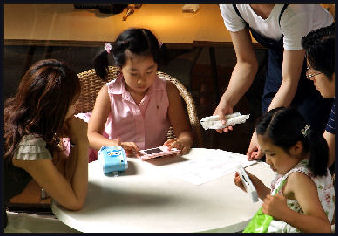
Nintendo's Gameboy was the world's first and best-selling handsize video-game machine. It was invented by Japanese game designer Gumpei Yokoi and introduced by Nintendo in 1989. As of September 2002, 142 million Gameboys had been sold, making it the best-selling video game system ever, and 300 different games could be played with it. Surveys in the early 2000s showed that 90 percent of elementary school children owned one.
Game Boy Advance was introduced in Japan in March 2001. It had a color liquid-crystal screen, a 32-bit chip, devices that allowed players to link one machine with another and connect players with cell phones and special websites. It could also be hooked up to sewing machines, language learning software and a sonar that can locate fish. It has sold 42 million units as of December 2003.
Nintendo DS
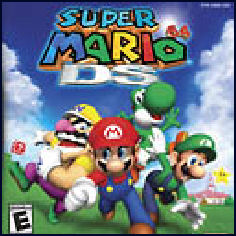
Nintendo DS, Nintendo’s portable game console sold well after its debut in Japan with a price tage of $145 in November 2004. It has two screens, one of which is touch sensitive. The touch sensitive screen aims to be fun and easy to learn and play. A DS with a camera and audio player, selling for $180 was released in November 2008. DS stands for “dual screen..”
As of August 2011 Nintendo had sold nearly 150 million DS machines since they went on sale in 2004, outpacing the Sony PlayStation Portable, which went on sale about the same time, and whose cumulative global sales total 71 million. Thirteen million Nintendo DS systems had been sold as of January 2006. These included 4 million in North America, 5 million in Japan and 3.5 million in Europe. In 2006, Nintendo sold 7.53 million DS units, compared to 1.95 million Playstation Portables sold by Sony. Some 30.31 million DS units were sold in fiscal 2007. Nintendo's DS sold nearly 136 million units up to September 2010
Nintendo had great success selling mind-challenging games for middle-aged and elderly adults who have traditionally disliked video games. As of mid 2006 more than 4 million copies of these had been sold and versions were being prepared for Europe and the United States. The games involve doing simple math and verbal exercises as quickly as possible and have been embraced by the elderly as way of keeping their brains? sharp.
The “brain training” exercises are so popular that bookstores have special sections for them and local governments sponsor weekly “Healthy Brain Classes” for the elderly. Studies have shown the doing the exercises daily improves the memory and cognitive skills of dementia patients.
DS consoles outfit with “brain training” exercises that involve reading, memory puzzles and problems solving. have been used in classrooms in Scotland to help boost cognitive skills. In Japan DSs have been used to teach children 2,000 Kanji (Chinese characters) and have been wired to provide sightseeing information for tourist in certain spots in Tokyo.
DSi was introduced in November 2008 and sold more than 500,000 units in its first month. It has a camera and can download software from the Internet to customize to it for the individual.
Global sales of Nintendo DS surpassed 100 million in March 2009 after beiung in the market four years and three months and includes sales of the original DS, improved DS lite and third generation DSi.
Game makers have began designing games specifically Nintendo DS. “Dragon Quest IX: Hoshizora no Mamoribito” by Square Enix was made for DS.
A study done at 32 schools in Scotland, found that students who played math games on their DS consoles every day showed a 50 percent greater improvement on test scores than students who didn’t play. An educator quoted in the book: “ Fun Inc. “ by Tom Chatfield said, “We find that some pupils are disengaged from learning by the traditional fear they get from school. And the games are very powerful in dealing with this.”
Nintendo’s 3DS
Nintendo’s 3DS can play games and show movies in 3D without glasses. Debuting in February 2011, it sells for $250 and promises to be the world’s first 3-D mass-market product. Lines formed outside electronics stores in Tokyo on the day of its debut. Michael Pachter, an industry analyst at Wedbush Securities, told the New York Times that with the 3-D graphics of the new Nintendo machine, the company has a chance to attract consumers the way it did with its Wii console.”The 3DS is sufficiently novel and cool to reverse this trend” of people using their smart phones to play games, he said, predicting that it would sell out through the end of the year. “It will get people excited, and will make kids and parents forget the mobile phone.”
Not all analysts agree. Evan Wilson of Pacific Crest Securities said the 3DS and the next version of Sony’s PSP would be hard-pressed to reproduce the success of the current models.”Given the shifts in the market, it’s nearly impossible to sell as many 3DS as they did DS, and nearly impossible for Sony to sell as many of the next PSP as they did the PSP,” he said. Nintendo indicated how difficult it would be to repeat the DS’s performance when, at an annual conference for investors in September, the company’s chief executive, Satoru Iwata, said that to make the 3DS a hit, “we will have to overcome unprecedented challenges.”
The New York Times reported: “Nintendo’s 3-D technology comes with a hitch: the company warns that children 6 years old and younger should not play games in 3-D, because viewing these images for long periods of time could harm their eyes. Moreover is cost about as much as as a higher-end iPhone with a service contract.
The launch of the 3DS was disappointing. As of August 2011 Nintendo has sold just 4.32 million 3DS machines around the world so far. In August 2011 Nintendo slashed the price of its 3DS to ¥15,000 yen in Japan, down from ¥25,000. In the U.S., the price dropped to $169.99 from $249.99. Such a major price cut so soon after a product launch was unprecedented for Nintendo, underscoring 3DS' struggles. At the root of the problem seems to be the switch from portable game consoles to smartphones. After the price cuts Nintendo shares lost more than a fifth of their value.
In February 2012, Jools Whitehorn wrote in Handhelds News: “Less than a year since its launch, the Nintendo 3DS has sold 5 million units in its native Japan. That beats the original DS handheld console, which went on to become the best-selling console of all time. Its sales got off to a shaky start, which concerned Nintendo at the time, and was attributed to a lack of decent games. A high launch price of 25,000 yen also put a dent in the sales, but was slashed to 15,000 yen to encourage the buying public. This and the launch of some headline games including Super Mario 3D Land, Monster Hunter 3 and Mario Kart 7 helped 3DS sales pick up. However the 5 million sales record is a bittersweet achievement, as the company is actually losing money on the 3DS. [Source: Jools Whitehorn, Handhelds News, February 20, 2012]
In June 2012, AP reported: “Nintendo has upgraded its 3DS handheld to sport a screen nearly twice as big as the previous model amid hot competition against smartphones and tablets that are wooing people away from dedicated gaming machines. It will sell in Japan for 18,900 yen ($236) and $199.99 in the US. The 3DS, which has a touch panel and delivers 3-D imagery without special glasses, has two screens — one is 3.53 inches and the other is 3.02 inches. The LL or XL version’s screens are 4.88 inches and 4.18 inches, according to the company. Screen inches refer to the diagonal measurement so LL screens are 1.9 times bigger. [Source: AP, June 22, 2012]
“There were demands for a bigger screen, and so we are ready to respond with a size-variation model,” Nintendo President Satoru Iwata said in a video on the company’s website. “You can enjoy powerful 3D imagery.” It weighs a bit more and is slightly bigger than the previous model. But battery life was extended to up to six and a half hours for 3D games from the previous five hours, and up to 10 hours from eight hours for regular games.
Nintendo Game Consoles
Nintendo 64, a game console that connected with a television, sold a half million copies in two weeks after it was introduced in 1996. It was popular with children but not adults. It sold about 30 million units as of 2000 but didn't sell as well as expected and was outperformed Sony's PlayStation1. Independent games designers didn't like they way were manipulated by Nintendo with the Nintendo 64 console and flocked to design games for Sony's PlayStation instead.
Nintendo spent millions developing the Game Cube, a purple cube-shaped game console that was the first Nintendo console to use discs rather than cartridges and could be hooked up to Game Boy Advance. The Game Cube was launched in Japan in September 2001. It sold for $200, and was about $80 cheaper than its main rival Play Station2. As of 2006, 20 million Game Cubes had been sold
With Game Cube, Nintendo focused on producing a platform for games that were fun to play, ignoring the Sony and Microsoft emphasis on fancy graphics. Nintendo was able to woo independent games designers, who found PlayStation2 to complicated to design games for. Game Cube consistently ranked No. 2 behind PlayStation 2 but ahead of Microsoft’s X-Box and then fell behind XBox. Sales as of December 2003: 1) Sony PlayStation 2 (17.9 million); 2) Microsoft Xbox (8.4 million); 3( Nintendo GameCube (6.4 million).
Nintendo’s Wii
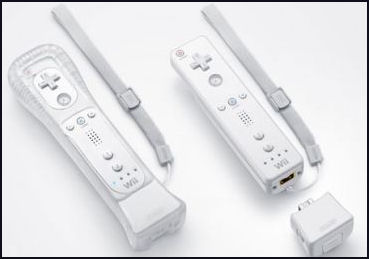
wii motion plus Nintendo scored a huge success with it Wii console system. Wii went in sale in late 2006 in the United States and Japan. The buzz surrounding it was intense. More than 1,000 people waited in line to buy it outside a store in Time Square in New York City. The first person to buy waited in line for a week. As of 2012 Nintendo had sold nearly 100 million Wii units world-wide since its release in 2006, Nintendo said, and has averaged about eight games sold per device.
Wii (pronounced wee) has an easy-to-learn, motion-sensing controller, low price ($250) and innovative software packages such as “Wii Fit”. The remote control device called a Wiimote allows players to simulate activities such as swinging a baseball bat, golf club, sword or tennis racket, throw a frisbee, steal a car, or take a punch at someone in a boxing match. Wii employs motion detectors and infrared sensors to record and relay player’s moves via the remote.
The Wii controller is essentially television remote reconfigured with motion sensing devices. Touch screens had been around for some time; it was Nintendo that figured out how to use the technology for a fun hand-held game. The Wii controller was originally conceived of as disc-shaped device that nicknamed the “cheddar cheese.”
The new Wii music device allows players to play guitar solos and simulate playing 60 instruments. The Wii Fit balance board allows users to do exercises such as aerobics and yoga and snowboard down virtual slopes. It works by adjusting the action to an individual’s weight and balance.
Soon after “Wii Fit”game was released there were reports of injuries. On one website there was a description of a woman who dislocated her knee while playing the tennis game in high heels. There were also reports of expensive flat screen television being destroyed by flying remotes that were balmed on flimsy straps. Nintendo responded by recalling 3.2 million games and installing thicker hand straps.
The buzz created by injures and damaged electronics may have done more good than harm. One advertising executive told the New York Times, “What it says is this thing is so fun that people get carried away. You know what? Actually, that’s pretty good.”
Nintendo was investigated on charges that it infringed on four patents held by the U.S. technology firm Hillcrest Laboratories which developed a three-dimensional pointing devise and a navigation interface display system reportedly stolen by Nintendo for Wii. Sales of the Wii Classic controller, sold separately from the console, were blocked by of $21 million judgment against Nintendo by the Texas-based company Anascae that also accused Nintendo of using its technology.
A new Wii is slated to be released in 2012.
Nintendo’s Wii’s Success
In Japan 372,000 Wii consoles were sold in the first two days after its launch in late 2006. Wii sales reached 990,000 units in the first month of sales, double Sony’s Playstation3 even though Wii was introduced three weeks later than Playstaion3. Analysts original predicted that Wii would do poorly against PlayStation 3 and Microsofts’s X-Box.
Wii sales in the United States was 640,000 units in December 2006 but would have been much higher if supply could have met demand. There many stories of gamers going to desperate lengths to get a hold of Wii consoles. A 28-year-old mother of three died from water intoxification in a local radio “Hold Your Wee for a Wii” competition. Wii did so well Microsoft and Sony lowered the prices of X-Box and PS3 to compte.
The Wii console has been selling at a rate of 500,000 to 800,000 units a month in the United States. A total of 18.61 Wii units were sold in fiscal 2007. Wii was selling strong in 2007 and 2008. It the best-selling game console in the United States in 2007 with 43 percent share. In 2008 it grabbed a 49 percent share.
Nintendo sold 2.04 million Wii players in November 2008, double the number it sold in November 2007, offering evidence that it was weathering the economic crisis. Sales remained strong during the economic crisis in 2008 and 2009 and Nintendo didn’t think it was necessary to cut prices.
Wii sales surpassed 50 million in April 2009.
Software sales for Wii has also been robust. Wii “Fit”, a popular game title, sold 1.85 millon copies in first four months after it was launched in December 2007. Other games’such as like the “Super Smash Bros. Brawl”; “Wii Hula”, which offers Hula lessons based in the Miss Aloha Hula contest; and versions of popular games like “Final fantasy” adapted for Wii — also sold well.
Wii music offer 60 instruments, which be played alone or with up to three other people. To play a guitar, banjo or sitar you strum the Wii controller. To be a conductor you wave it in the air.
New Touchscreen Wii U Console
In April 2011, Nintendo unveiled the Wii U — a new touchscreen controller for its next-generation Wii to positive early reviews. Reuters reported: “While the first new gaming console in five years fell short of being the game-changer the original was -- luring millions of new casual users with its simplicity and motion-control -- industry executives and analysts gave the Wii U's touchscreen controller the thumbs-up. Many liked the innovation embodied by the separate device, larger than Apple Inc's iPhone, but smaller than the iPad. It has a touchscreen, camera and video-call capability, plus an array of buttons and functions that might entice gamers who play longer and more intensely.” [Source: Liana B. Baker and Isabel Reynolds, Reuters, June 7, 2011]
“The 6.2-inch Wii U touchscreen works like a second display and can show the same images that are on the TV screen or provide gamers with additional information, giving them an edge over competitors. The Wii U's controller can also be used to make voice calls and run old Nintendo games. It has motion-sensor capabilities and works in conjunction with existing Wii controllers. With its array of buttons, the device could appeal to hardcore gamers who could use it for first-person shooter games. The device also acts as a stand-alone gaming gadget. It can, for instance, continue running a game on the touchscreen while someone else watches TV. But it functions only in wireless connection with a Wii U console.”
“The entire console is still under development, but expected to go on sale between April and December 2012. No price has been set, but some speculate it could move for $299, or about the same as an Xbox twinned with a Kinect motion-sensing system.” "There are so many developers already responding to creating new games for the videogame system we are proposing with Wii U," said Nintendo global president Satoru Iwata. "It can satisfy all tastes with deeper gameplay actions."
"The controller is a breakthrough," said Sterne Agee analyst Arvind Bhatia. "Overall, Wii U looks good, but I have to say I wasn't blown away." Ricardo Torres, editor-in-chief for popular games site gamespot.com, told Reuters. "It's smart for a number of reasons. There are two levels of interface, the touchscreen for casual gamers and the buttons for more core types. They have a lot of games core gamers care about. It's like a sandbox for developers. It's up to them to decide the experience that works best." Wedbush analyst Michael Pachter said, "Nintendo is ahead of the curve for once. It can do anything a tablet can do and people might be asking, why can't my iPad 2 do this kind of gaming too?"
Nintendo's Shigeru Miyamoto
Nintendo’s legendary game designer Shigeru Miyamoto is considered to be the father of the modern video games. He has designed more than 100 game titles, including “Super Mario, Donkey Kong, Legend of Zelda: Ocarina of Time “ “ Pokomon” and 60 other games that have earned Nintendo billions of dollars in sales. Among video game lovers he is the equivalent of Steven Spielberg. He not only popularized Nintendo games he helped make video games themselves popular. he also played a key role in the development of the company's Nintendo DS portable game machine and WII.
Miyamoto headed the team that designed Wii, which is perhaps his greatest achievements because it so popular among traditional non-gamers. He once said, “When my relatives start talking to me about video games, then I’ll know I have succeeded.”
Miyamoto was selected as one of the world’s most influential people by Time magazine in 2007 and was named a chevalier (knight) by the French government. When he talks with the press he is polite and delf-deprecating but in is office he is known for having a fiery temper when his teams don’t produce.
Miyamoto was born in a rural town outside of Kyoto. As a kid he liked doodling and harbored dreams of becoming a puppeteer. He attended a city college and took five years to get a degree in industrial design. The game “Space Invaders” perked his interest in video games. “Before I saw it,” he told Time, “I was never particularly interested in video games and certainly never thought I would make video games.” Miyamoto’s dad was friend of the head of Nintendo and got Miyamoto a job with the company.
In May 2012, Jiji Press reported: “Japanese video game designer Shigeru Miyamoto has won Spain's prestigious Prince of Asturias Award for communication and humanities this year, the Prince of Asturias Foundation said. The award is given to individuals and organizations who contribute to society in such fields as art, literature, technical and scientific research, and international cooperation as well as communication and humanities. In 2011, the Prince of Asturias Award for concord was given to workers who strived to contain the crisis at Tokyo Electric Power Co.'s Fukushima No. 1 nuclear power plant. [Source: Jiji Press, May 25, 2012]
Wii U
Don Reisinger wrote in CNET: Nintendo has been making a strong push for the Wii U, releasing commercials and holding special events to highlight its hardware and software. The console, which will launch on November 18, offers a host of improvements over its predecessor, including HD graphics and more powerful components, allowing it to dish out better-looking games. The console is accompanied by the GamePad controller, which features a 6.2-inch LCD display that's capable of interacting with a game on the television, as well as allowing users to play a title when they go mobile. The Wii U will start at $299 for the Basic set, offering the console and GamePad. A $349 Deluxe set adds a stand, charging station, and copy of the Nintendo Land video game. [Source: Don Reisinger, CNET, October 24, 2012]
MarketWatch reported: “Nintend has acknowledged that the device is being sold at a loss, despite its starting price of $299. Historically, the company has focused on selling its hardware at a profit from the outset. This time, however, the company said the loss is easily reversed: the sale of one piece of software helps to bring the device back into the black, Nintendo said, underscoring how important game sales are to the company. "It is critical that we get consumers to purchase software to engage with the system," Mr. Fils-Aime said, adding that the company's goal is to increase sales of all games made for its devices. "That's the fundamental of the business model.”
One of the things that may help the company this time around is its added services for the device, such as the ability to access Netflix Inc.'s (NFLX) library of movies and television shows, as well as its Nintendo's own Internet-connected features, such as its new Miiverse gaming social network, which debuted last week.
In June 2012, AP reported: “Nintendo is relying on a famous plumber, zombies and a virtual theme park to build buzz for the Wii U. The Japanese gaming giant unleashed 23 games for its upcoming console featuring a touchscreen controller during a news conference at the Electronic Entertainment Expo, the gaming industry's annual trade show. Among the titles announced were the cooperative platform game "New Super Mario Bros. U" and the amusement-park-themed mini-game collection "NintendoLand." Nintendo also demonstrated the fantastical strategy sequel "Pikmin 3" and first-person undead-fighting game "ZombiU" from Ubisoft Entertainment. [Source: Derrik J. Lang, AP, June 5, 2012]
The titles employed what the company is dubbing "asymmetric gameplay," which gives players using the 6.2-inch touchscreen controller called the Wii U GamePad a different experience than those armed with traditional Wii controllers. The Wii U will be compatible with previous Wii controllers, including the Wii Nunchuk and Wii Balance Board.
Nintendo illustrated that "New Super Mario Bros. U" could be played on either a TV or the touchscreen controller, and that the latest installment in the brick-smashing, coin-collecting franchise would allow up to four players to play simultaneously with traditional controllers, while another could join in with the touchscreen controller to jab enemies and build platforms from afar."With the Wii U GamePad, we have the first dedicated personal screen in the long history of game machines," Shigeru Miyamoto, who created "Super Mario Bros." and "Legend of Zelda," said at the news conference through a translator. Other games announced for the successor to the popular Wii console included the fitness title "Wii Fit U," a sing-and-dance-along game called "SiNG" and the word-filled puzzler "Scribblenauts Unlimited" from Warner Bros. Interactive Entertainment.
Nintendo's Wii U Sells Out in First Week in U.S
In November 2012,MarketWatch reported: “Nintendo Co. said it sold out of its new Wii U console during its first week on the market, indicating strong demand for the company's next generation of videogame devices. Nintendo said it sold more than 400,000 Wii U consoles after its release in the U.S., according to internal metrics. "Wii U effectively sold out at retail," said Reggie Fils-Aime, head of Nintendo's operations in America. He said Nintendo is shipping more devices to its retail partners, but demand is outstripping supply. "As soon as Wii U hits the shelf, it's selling out." Overall, Nintendo said it sold more than 1.2 million videogame consoles in the past week, including the Wii, which sold more than 300,000 units, and its handheld game players, such as the 3DS, which rung up more than 250,000 units. [Source: MarketWatch, November 26, 2012]
Nintendo said the sales were comparable to the original Wii when it was first released six years ago. Analysts and industry executives alike have expressed concern about whether the new device, whose marquee feature is a controller with an integrated touchscreen tablet, can reignite interest among consumers that the originally Wii console created. The device was launched amid a protracted slump in videogame sales and consumers' increasing interest in playing games on smartphones and tablets, rather than specialized videogame devices. Nintendo is the first of the major game makers to release a new console in this environment, attempting to reverse its own trends of contracting sales for its Wii console.
Shigeru Miyamoto Games
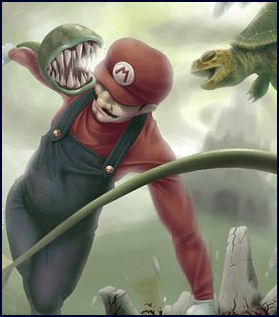
Miyamoto joined Nintendo in 1977 and began as poster designer for arcade games. He created the Donkey Kong arcade game in 1981, and the first Super Mario game in 1985. Donkey Kong was a coupling of King Kong with Popeye. Expectations for the game were so low it was initially tested at just two bars in Seattle. The game turned out be a big success and launched Miyamoto’s career.
The Mario games alone have earned Nintendo more than $5 billion. Miyamoto keeps a banjo in his office, which is separated only by partition from the other member of his team by a partition. His advice to children: "Play outside on sunny days."
On using the same characters over and over, Miyamoto told Time, “I try not so much to create new characters and worlds but to create new game-play experiences. If a new experience is better suited to a new type of character or world than one of our existing franchises, then we might create a new character or world around it.”
Miyamoto’s games are known for incorporating the latest technological advances, putting cartoon cutsiness ahead of realism and being simple enough for a beginner to enjoy and sophisticated to keep the attention of hardcore gamers. Miyamoto’s earliest games employed complex single-screen techniques. Super Mario Brothers featured innovative scrolling while Zelda offered a rolling overhead view. Some of his games were inspired by his passions: “Nintendodogs” from his love of dogs and the carrot-shaped “Pikmin” from his hobby of gardening.
Shigeru Miyamoto and Wii
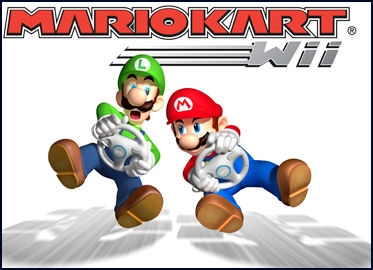
Wii’s Fit was inspired y Miyamoto’s habit of weighing himself and keeping track of his weight on a chart on the wall. The breakthrough for the balance board scheme was attaching motion sensors to each corner and employing balance systems inspired by “setai” — a Japanese healing therapy that focuses on posture.
Miyamoto told Time, “When people look back at “Wii Fit”, they won’t look at it in comparison to “Mario” but as a unique interactive entertainment that really introduced to the masses to what games can be. While there is appeal in creating living, breathing fantasy worlds, I can also see the experience of interacting with your reality in a way that you normally can’t as a great source of entertainment.”
Nintendo Games
Legendary Nintendo games include “Super Mario, Donkey Kong, Legend of Zelda: Ocarina of Time, Sonic the Hedgehog.” and “Pokomon”. The version of Zelda released in 2007 — “the Phantom Hourglass” — was described by ne gamer critic as a “refreshing breeze.”
See Shigeru Miyamoto and Consoles Above
In 2001, Nintendo broke away from its squeaky clean family image and developed Conker the Squirrel, its first game designed for the adult market. Conker wakes up with a hangover and encounter cute bunnies in hot pants and brutally attacks other small animals.
Pokemon
See Toys in Japan, Separate Article
Image Sources: Nintendo and exorsyst blog
Text Sources: New York Times, Washington Post, Los Angeles Times, Daily Yomiuri, Times of London, Japan National Tourist Organization (JNTO), National Geographic, The New Yorker, Time, Newsweek, Reuters, AP, Lonely Planet Guides, Compton’s Encyclopedia and various books and other publications.
Last updated January 2013
